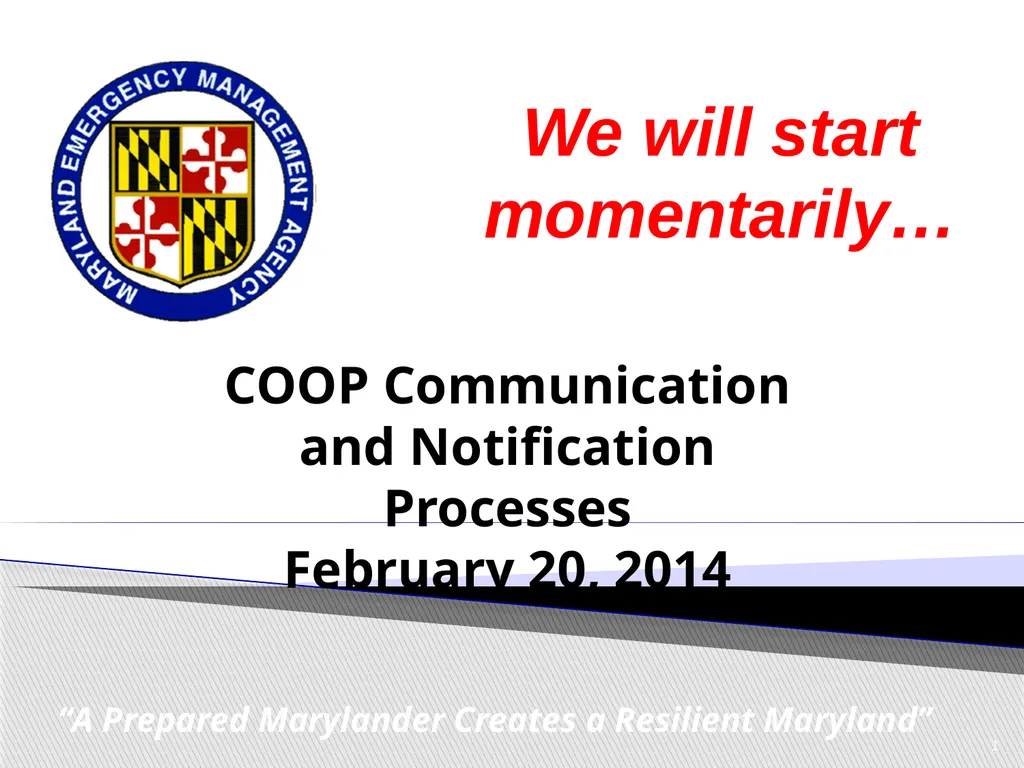
CPP COOP Communication and Notification Processes
Author: danika-pritchard | Published: 2025-05-29
Description: CPP COOP Communication and Notification Processes February 20, 2014 A Prepared Marylander Creates a Resilient Maryland 1 We will start momentarily CPP COOP Communication and Notification Processes February 20, 2014 A Prepared Marylander
Download Presentation
Download the PPT/PDF: Download
Transcript:
Loading transcript…